First experience: Nexsan E-Series
One of my longtime DataCore customers has started a project to replace their current DataCore storage servers and backend storage with new hardware. In opposite of the current setup, the newly installed backend storage is now FC-attached. The customer has selected Nexsan E-Series E32V, E32XV and E48V storage systems in combination with DataCore SANsymphony-V10.
Who is Nexsan?
The question should be: Who is Imation? Nexsan was founded in 1999 in Derby, England, but was aquired by Imation in December 2012. Since December 2012, Nexsan is one of Imations brands and offers, as a storage-only company, three different product lines: Assureon Secure Storage, E-Series High Density Storage and NST Hybrid Storage.
Assureon Secure Storage is amied to customers that needs to implement storage optimization, regulatory and corporate compliance, and/ or long-term archiving of unstructured data.
NST Hybrid Storage offers unified storage and access to it using standard NAS and SAN protocols (CIFS, NFS, FTP FC, iSCSI). It also offers high scalability and Imation’s FASTier caching technology to provide performance for mixed application workloads.
E-Series High Density Storage is aimed to customers that needs a lot capacity on a small footprint with low costs. Typically customers use the E-Series for backup-2-disk or as a high-capacity storage. The E-Series offers four different models:
| Model | Disks | Form factor |
|---|---|---|
| E18V | 18 disks | 2U |
| E32V | 32 disks | 2U |
| E48V | 48 disks | 4U |
| E60V | 60 disks | 4U |
The E18XV, E32XV, E48XV and E60XV are the corresponding expansion enclosures. You can add up to 2 enclosures to a so called head unit. All models support 3,5" disks (or 2,5" in a 3,5" cage), except the E32(X)V, which offers only support for 2,5" disks. You can mix different disk technologies (NL, SAS, SSD) in a single system. All controllers offer 1 GbE iSCSI ports (up to 8 ports per controller pair). There is also support for 6G SAS, 8 Gb FC, 16 Gb FC and 10 GbE iSCSI (up to 4 ports per controller pair). All E-Series support array-based snapshots and replication. The E60V with two enclosures can hold up to 1.44 PB (!) on 12U.
Why choose Nexsan E-Series storage as a backend for DataCore SANsymphony-V?
My first two thoughts were “Where are the cool features, like thin-provisioning, tiering etc.?” and “Oh cool, 32 disk on only 2U/ 48 disks on 4U”. And I think this ultimately describes the benefits of the Nexsan E-Series: No unnecessary frills and high capacity. To be honest: The main reason for using dumb SAS JBODs in the past was, that they doesn’t offer unnecessary frills. I don’t need snapshots, replication or thin-provisioning on array level. These features are offered by DataCore SANsymphony-V. In this case, the customer has chosen to switch from a SAS to a FC-attached storage backend. And in this case, a high performance and high density storage without unnecessary frills is the best thing that can happen.
Disclaimer: I’ve never worked with Nexsan before, and they do not pay me for this blog post.
Delivery and first impression
The delivery came directly from Nexsan, Derby. Six pallets, one pallet for each system (2x E32V, 2x E32XV and 2x E48V). The enclosure and disks were packed separately, but in the same package. The packaging was adequate and it was all neatly packed and well padded. Each system was intensively tested by Nexsan before the shipment.
The first step was to mount the rail kits. The rail kits are very solidly built and partially milled from aluminum. Mounting the rail kits was an easy thing using the included template. You have to use the enclosed screws. Unfortunately no screwdriver-less mounting. The rails were anything but smoothly. And it was a precision job to mount the enclosures. But to be honest: How often do you rack the enclosures? One time.
Installation
Each controller has a management port. The first controller has the ip address 10.11.12.13/8, the second controller 10.11.12.14/8. Simply hook up your laptop and connect to one of these IPs. You don’t need login credentials at this point. But you better should assign a password for the ADMIN (case-sensitive!) after finishing the installation.
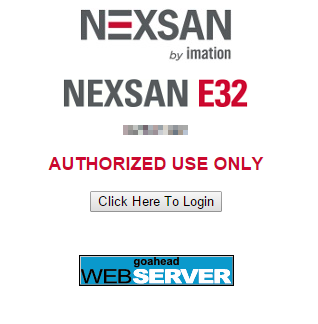
Patrick Terlisten/ vcloudnine.de/ Creative Commons CC0
If you have multiple Nexsan storage arrays in your network, please make sure that have connected only one system at one time. All Nexsan E-Series storage arrays use the same default ip addresses.
The hardware
The Nexsan E-Series is a classy dual-controller storage. This is a picture of a E32V. As you can see, 16 hard drives are mounted in one drawer. Nexsan’s so called ActiveDrawer Technology allows you to service disks and both fan units (one at the front and one at the end of the drawer) online. All important components are hot-swappable.
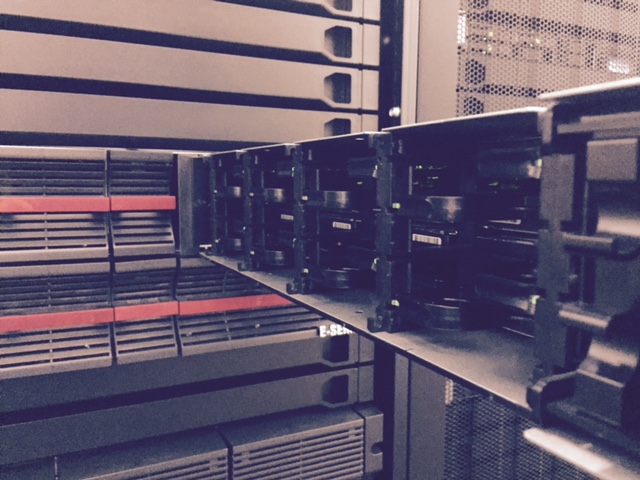
Patrick Terlisten/ vcloudnine.de/ Creative Commons CC0
The expansion unit E32XV uses the same technology as the E32V. But instead of two controllers, the expansion enclosures has two IO modules. This is the back of the E32V with the SAS-connected E32XV.
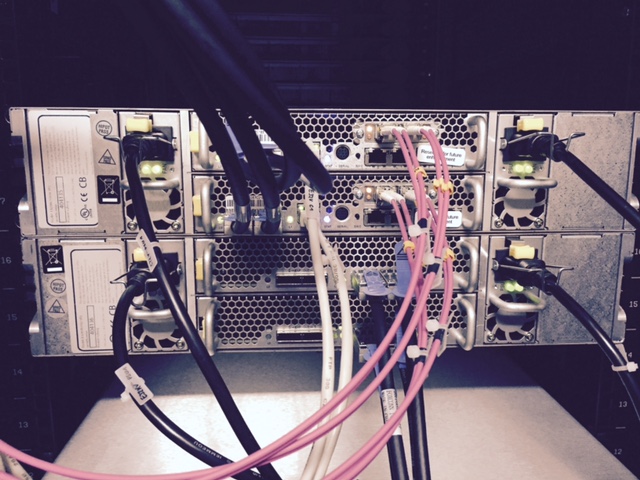
Patrick Terlisten/ vcloudnine.de/ Creative Commons CC0
This is a E48V with one pulled out drawer. It also uses the the ActiveDrawer Technology. The controllers are nearly the same, but they have 8 GB cache instead of 4 GB.
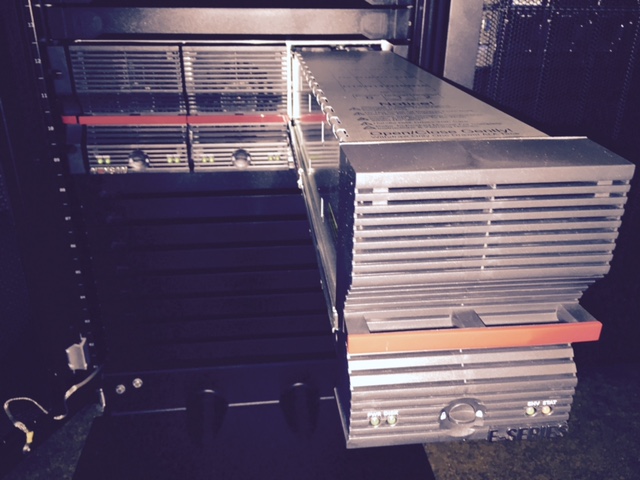
Patrick Terlisten/ vcloudnine.de/ Creative Commons CC0
The GUI
The GUI is really puristic and fast. Pure HTML with a bit Java Script. You can enable HTTPS if you like. I haven’t noticed any problems with different browsers. The home page gives you a brief overview about the hardware status.

Patrick Terlisten/ vcloudnine.de/ Creative Commons CC0
The storage arrays are coming with pre-build RAID arrays and volumes. If you want another setup, simply use the Quick Start feature. Simply enter the number of RAID sets, spares and volumes and the wizard make the rest.
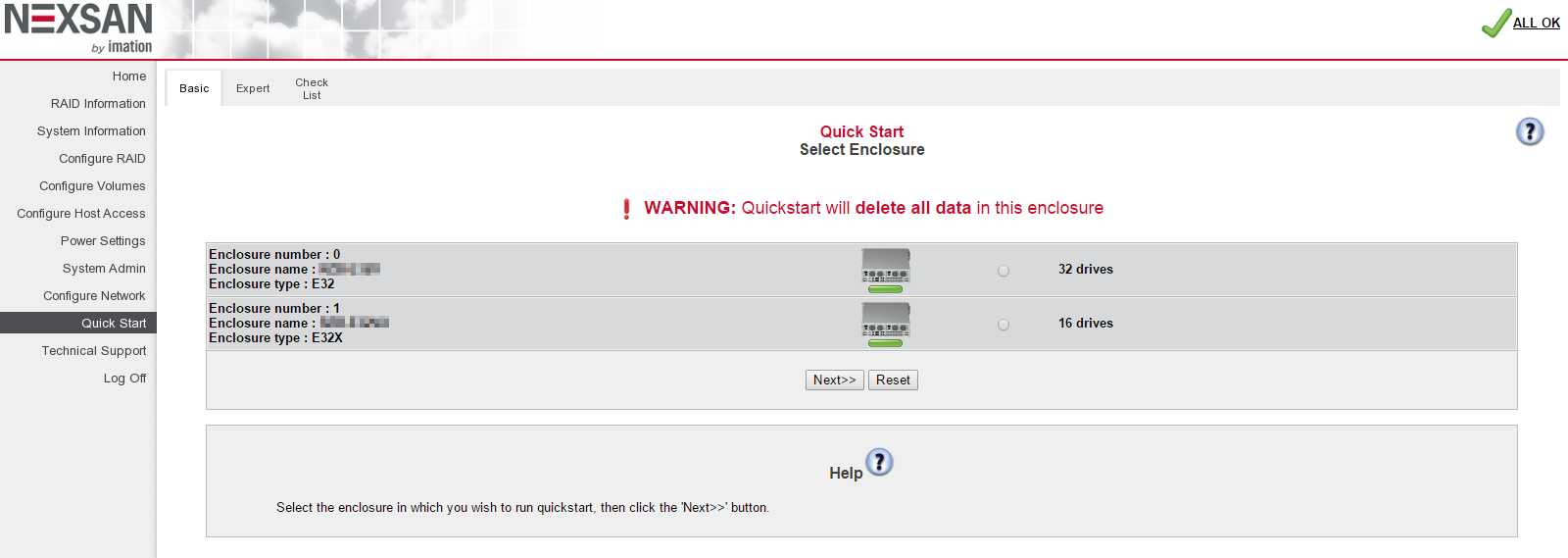
Patrick Terlisten/ vcloudnine.de/ Creative Commons CC0
One very cool feature is the multi view. Multi view allows you get a quick overview over multiple E-Series storage arrays.
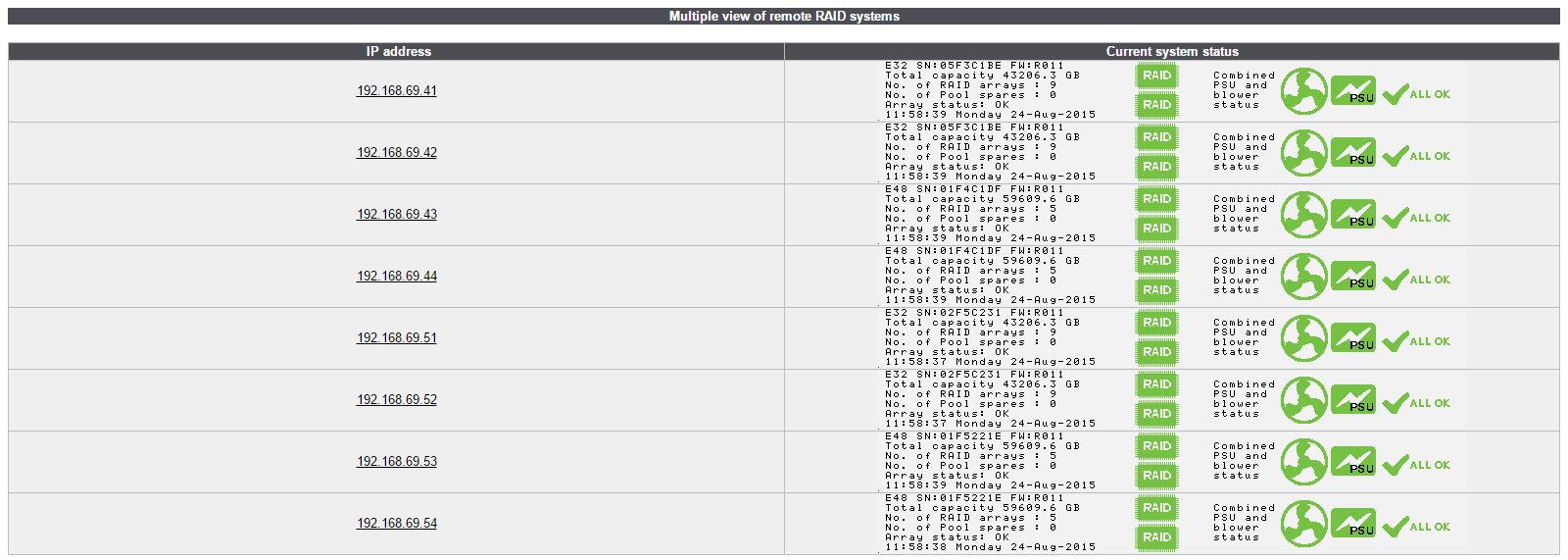
Patrick Terlisten/ vcloudnine.de/ Creative Commons CC0
The GUI is very talkative. Lots of useful information. Very clear and a short help on every page. This is the system info page:

Patrick Terlisten/ vcloudnine.de/ Creative Commons CC0
The same applies to the RAID info page. Nice: Disk and hosts stats! Very handy.
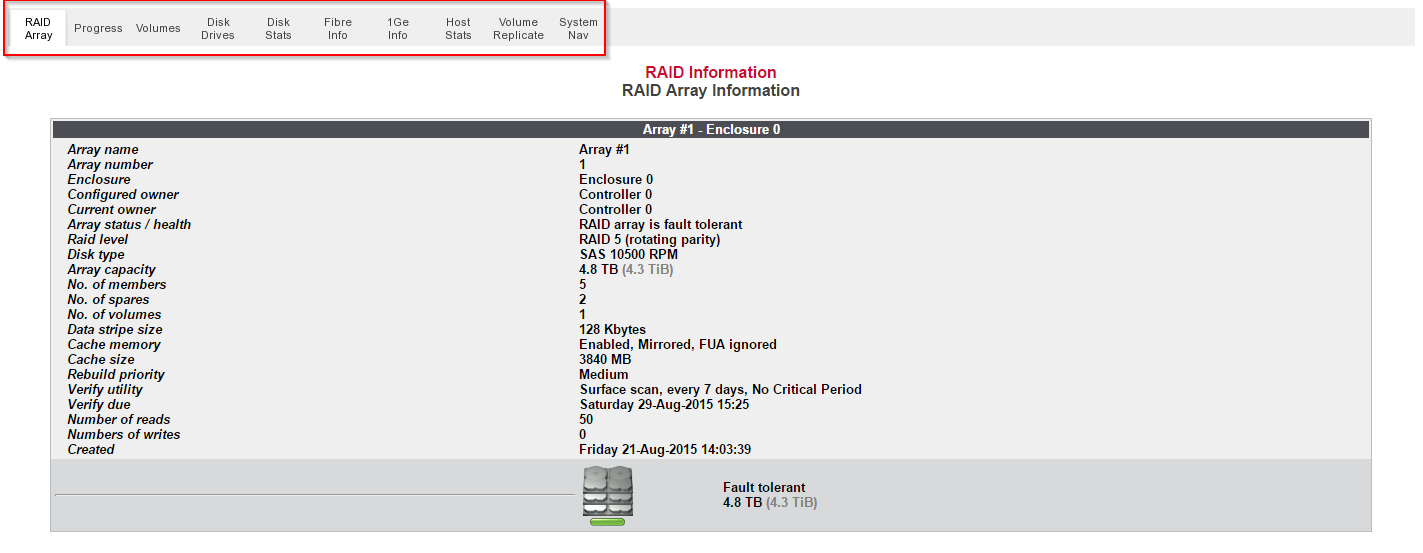
Patrick Terlisten/ vcloudnine.de/ Creative Commons CC0
For our DevOps friends: Each controller offers a config dump page which is plain text and can parsed by a monitoring system or script. The E-Series offers all necessary monitoring features, like e-mail notification, SNMP, Syslog etc. If technical support is needed, the GUI offers a “Technical Support” page which can be used to open a support ticket right from the GUI.

Patrick Terlisten/ vcloudnine.de/ Creative Commons CC0
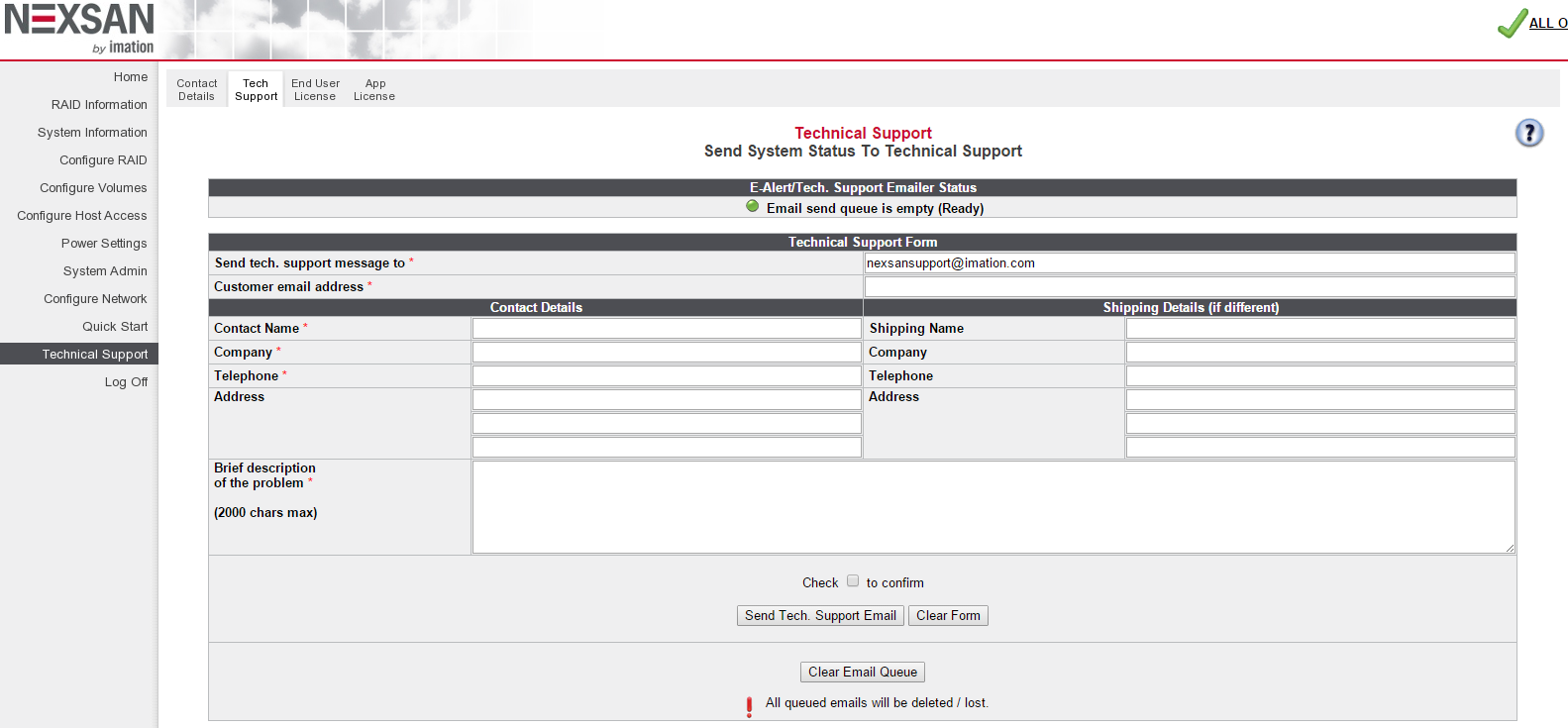
Patrick Terlisten/ vcloudnine.de/ Creative Commons CC0
Final words
I can’t say anything bad about the Nexsan E-Series. Sure, this is not a HP 3PAR, but should it? It’s a solid block storage and it’s a perfect fit with DataCore SANsymphony-V. The look and feel of the hardware is quite good. Good quality designed in UK. Make sure that you take a look at Nexsan if you’re searching for a solid DataCore backend storage. Patrick Schulz has also some experience with Nexsan and DataCore. Check out his blog posts about DataCore SANsymphony-V and Nexsan!
